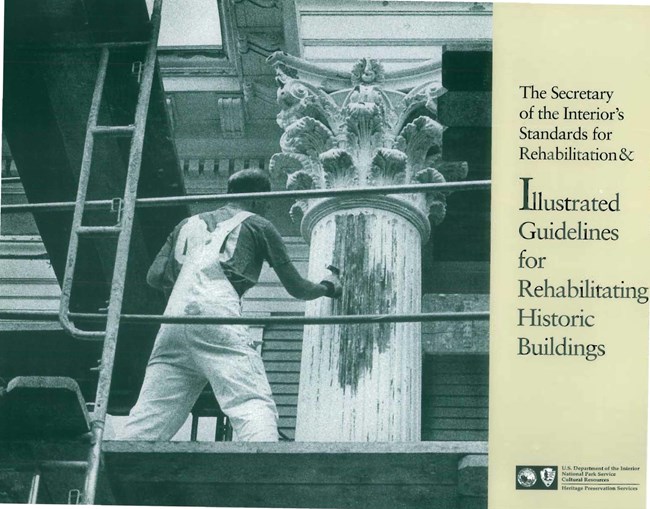Last updated: May 17, 2025
Article
Guidelines for Rehabilitating Historic Buildings

The Guidelines for Rehabilitating Historic Buildings were initially developed in 1977 to help property owners, developers, and Federal managers apply the Secretary of the Interior's Standards for Rehabilitation during the project planning stage by providing general design and technical recommendations. Unlike the Standards, the Guidelines are not codified as program requirements. Together with the Standards for Rehabilitation, they provide a model process for owners, developers, and Federal agency managers to follow.
Guidelines for Rehabilitating Historic Buildings: Part 1 – Exterior
Guidelines for Rehabilitating Historic Buildings: Part 2 – Interior, Site, District or Neighborhood, Energy Conservation, New Additions, Accessibilty Considerations, Health and Safety Considerations
The Guidelines are intended to assist in applying the Standards to projects generally; consequently, they are not meant to give case-specific advice or address exceptions or rare instances. For example, they cannot tell owners or developers which features of their own historic building are important in defining the historic character and must be preserved – although examples are provided in each section – or which features could be altered, if necessary, for the new use. This kind of careful case-by-case decision-making is best accomplished by seeking assistance from qualified historic preservation professionals in the planning stage of the project. Such professionals include architects, architectural historians, historians, archeologists, and other who are skilled in the preservation, rehabilitation, and restoration of the historic properties.
The Guidelines pertain to historic buildings of all sizes, materials, occupancy, and construction types; and apply to interior and exterior work as well as new exterior additions. Those approaches, treatments, and techniques that are consistent with the Secretary of the Interior's Standards for Rehabilitation are listed in the "Recommended" column on the left; those approaches, treatments, and techniques that could adversely affect a building's historic character are listed in the "Not Recommended" column on the right.
To provide clear and consistent guidance for owners, developers, and Federal agency managers to follow, the "Recommended" courses of action in each section are listed in order of historic preservation concerns so that a rehabilitation project may be successfully planned and completed – one that, first, assures the preservation of a building's important or "character-defining" architectural materials and features and, second, makes possible an efficient contemporary use. Rehabilitation guidance in each section begins with protection and maintenance, that work which should be maximized in every project to enhance overall preservation goals. Next, where some deterioration is present, repair of the building's historic materials and features is recommended. Finally, when deterioration is so extensive that repair is not possible, the most problematic area of work is considered: replacement of historic materials and features with new materials.
To further guide the owner and developer in planning a successful rehabilitation project, those complex design issues dealing with new use requirements such as alterations and additions are highlighted at the end of each section to underscore the need for particular sensitivity in these areas.
